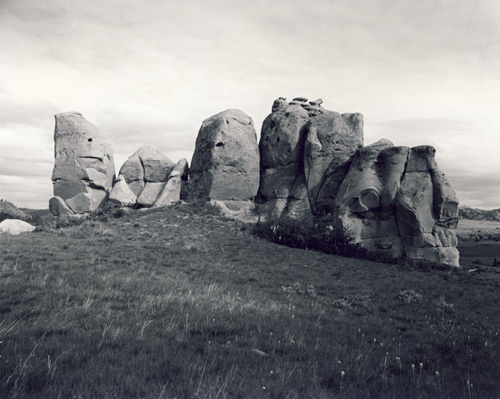
Petroglyphs and pictographs cover the sandstone cliffs of Deer Medicine Rocks, some of which may date to two thousand years ago. People, animals, designs, and inanimate objects cover all sides of the monolith. They include shield-bearing warriors etched long before horses arrived on the plains, horses and riders, tepees, elk, deer, mountain sheep, bears and bear paws, horse tracks, and guns. The exact origins of most of these images are unknown. Some of them resemble Shoshone petroglyphs in the Great Basin region; others resemble the images on Lakota winter counts. Still other evidence points to the makers being Crow and Cheyenne. Several of the designs, including turtles, lizards, v-necked humans, and bisected circles and circles containing dots are Cheyenne and Lakota religious symbols. Interpretations of actual designs differ, but in accordance with Cheyenne theology the rocks with their ever-changing visions of life and the future continuously affect people throughout the world. The site’s most famous pictograph, and the reason Deer Medicine Rocks is recognized as a National Historic Landmark, records a vision that came to Hunkpapa Lakota holy man Sitting Bull during a sun dance held in June 1876, approximately two weeks before the Battle of the Little Bighorn. The vision showed U.S. soldiers tumbling into the tribes’ camp, upside down. Then he heard a voice: “I give you these because they have no ears.” Sitting Bull interpreted this to mean that the “blue coats” would attack in great numbers, without strategy or understanding, and that his people would prevail.
Images
